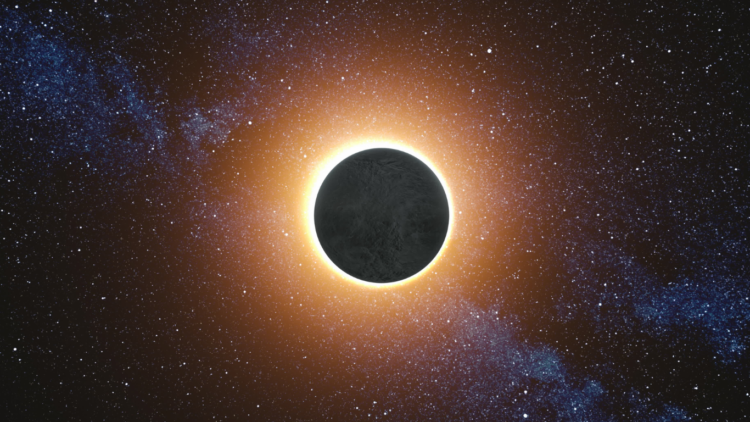It’s getting colder here in the Northern Hemisphere. Leaves have fallen, along with maybe some snow. Trees are looking a little bare, except for one kind: evergreens. Evergreens, as dendrologists (scientists who study trees) classify them, are trees that look mostly the same for more than one season. The most recognizable kind of evergreen we see in Canada are coniferous trees.
Fun Fact: Needles are why trees can survive cold winters
Coniferous trees not only have seeds for cones, which is what gives them their name, but their leaves have evolved into long thin needles.
Leaves are incredibly important because they are essentially the tree’s solar panels and make food for the tree out of sunlight, water and nutrients from the soil. But evergreen needles have another important difference from the leaves of deciduous trees, which have leaves that fall every autumn. A waxy substance covers the needles, which helps protect them from losing too much water as well as damage from the cold. The shape of the needles also means that the snow doesn’t stick to them like they do on a regular leaf.
Evergreens keep their needles, so they have to deal with snow differently. They are long and very thin, so the snow doesn’t stick to them the way it would a regular leaf. Evergreen needles and branches still accumulate snow during storms though, and often in colder snowy locations.
Fun Fact: Their branches are made to handle snow

But what happens when snow does accumulate on the needles and branches during a storm? The branches of many coniferous trees are flexible. Rather than breaking like other tree branches do, they bend downwards under the weight of snow, letting snow fall to the ground. That means less weight to hold all winter long!
Fun Fact: Evergreens lose their needles too

Evergreens may look the same throughout the year, but conifers can drop their needles too. It doesn’t happen all at once like deciduous trees, but needles may drop from time to time. Some coniferous trees, like tamarack, do drop all their leaves in autumn and they’re actually called deciduous conifers!
For the most part, conifers keep most of their leaves throughout the year, which means they save a lot of energy because they don’t need to make new leaves every spring. This means they can grow in places that most other trees can’t and in soil with less nutrients.
Fun fact: Trees are really important for animals in the winter

Trees provide shelter for many animals. Insects hide under the tree bark, and woodpeckers find food under the tree bark and live in holes they’ve made in tree trunks. Squirrels build nests of leaves and branches in the tree or use woodpeckers’ abandoned nesting holes. Sometimes, the Black-capped Chickadee, which is one of the few birds that stays in cold forests throughout the year, gather with other chickadees in the trees for warmth and may hibernate for a short time. Tree bark, especially of spruce trees, also acts as a freezer for chickadees and Canada Jays to store their food, as the bark also has some chemicals that help preserve food and maintain their nutrients.
Fun Fact: Some deciduous trees can also survive extremely cold temperatures

There are three deciduous trees that can survive temperatures even below -40 C: the White Birch, which grows all over Canada including the far north, the Trembling Aspen and the Balsam Poplar. Photosynthesis also occurs in the Balsam Poplar’s bark, not just in their leaves!
Canadian Winter Trees

Of 600 living species of coniferous trees, there are approximately 30 that are native to Canada, though scientists don’t completely agree on exactly how many. You will find the most diversity of coniferous trees in western provinces–British Columbia has 25 native species–and the second most diversity in the eastern and Atlantic provinces.
Use this template to identify trees in your neighbourhood and get a headstart on our Million Tree Project, which includes a seed collection program. Once you’ve described each characteristic, see if you can figure out what tree you’re looking at. Find some helpful resources below, including a list of some incredibly strong trees that are naturally found in Canada…see if you can spot them around your neighborhood!
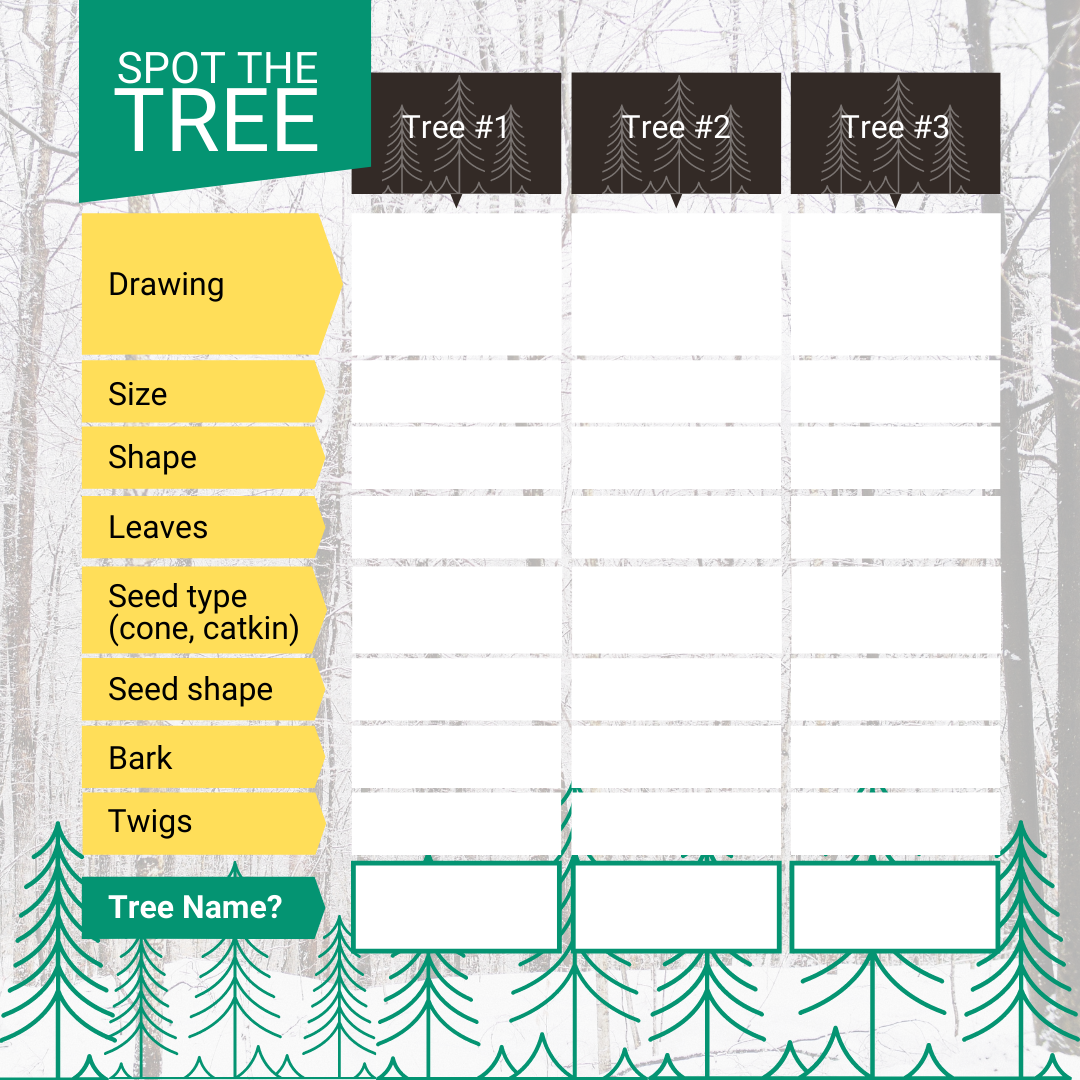
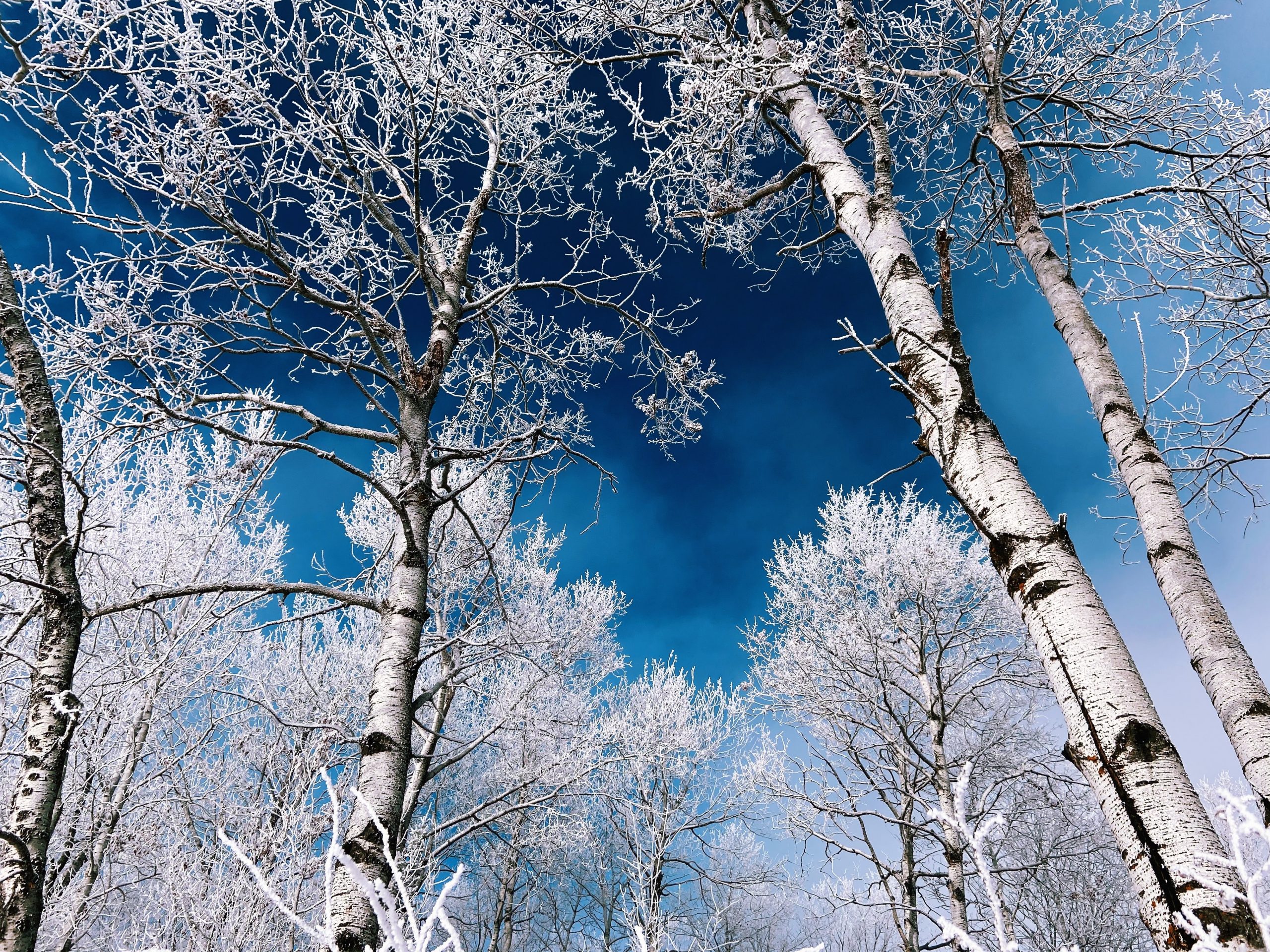
Photo by Juliana Marx on Unsplash
White birch
- Official tree of Saskatchewan
- Medium-sized tree
- Thin, smooth, white bark
- Leaves are egg or triangular shaped, dull green on top, lighter green and slightly hairy on the bottom, and 5-10 cm long
- Twigs are slender, hairy and dark reddish-brown
- Have catkins
- Trunk is slender and often curved
- Found across Canada
Trembling aspen
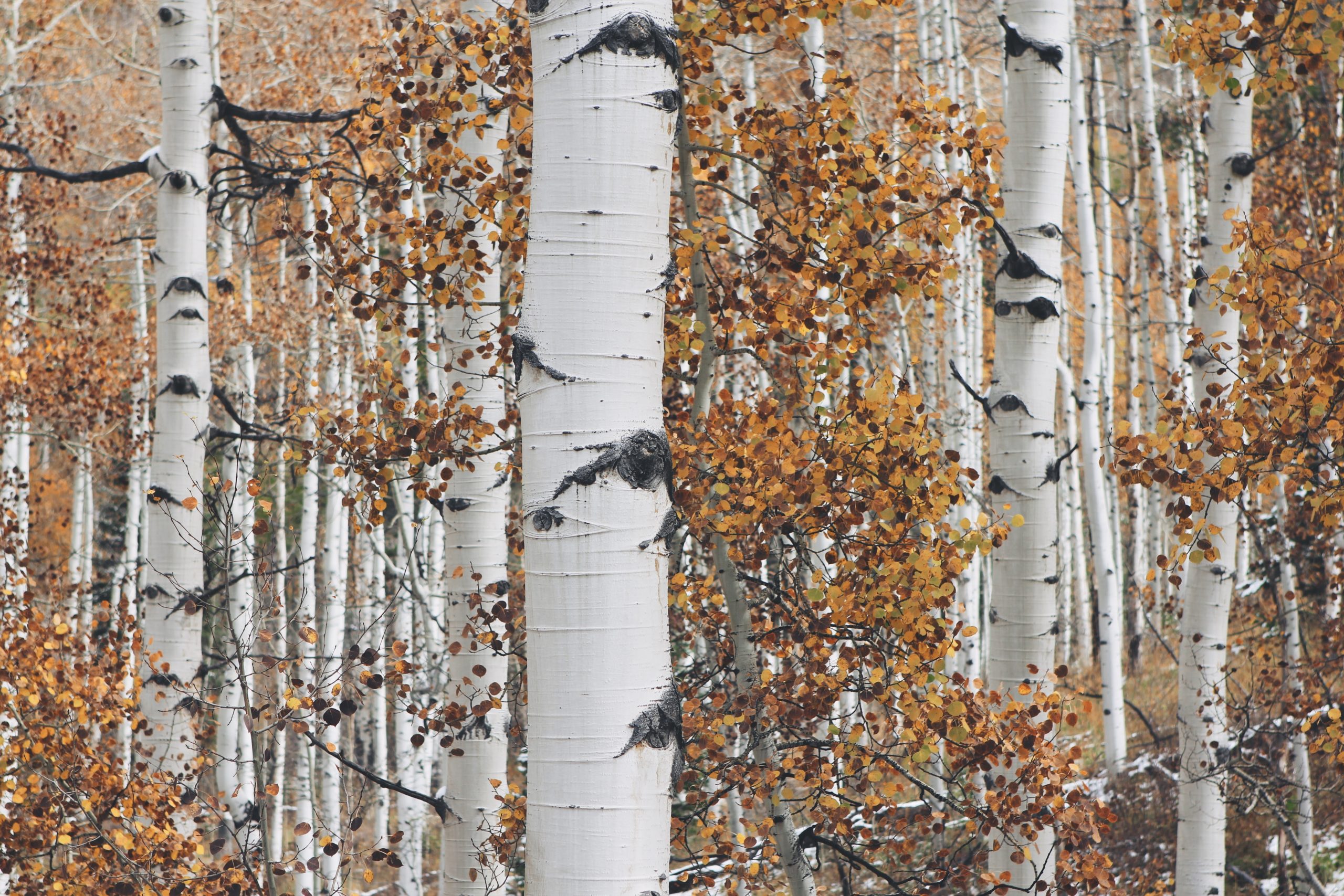
Photo by John Price on Unsplash
- Leaves are oval or kidney-shaped with a short and sharp tip, usually hairless and 3-7 cm long
- Twigs are slender, shiny and dark green or brownish-grey
- Have catkins
- Bark is smooth and waxy with long flat ridges, pale green to almost white which darkens with age
- Trunk is long, cylindrical, smooth and free from branches in the lower part
- Found throughout forests in Canada

Balsam poplar
- Pointed, shiny, oval-shaped leaves with dots underneath, and 7-12 cm long
- Leaves are dark green on top and silvery green on the bottom
- Sticky, fragrant buds with the smell of balsam
- Male trees have catkins and female trees have fluffy seeds
- Bark has flat gray scaly ridges, colour ranges from greenish-brown to grey
- Twigs are short and hairy, bright reddish-brown to dark orange to grey
- Trunk is long and straight
- Found in river valleys and low ground across Canada

Douglas-firs (Photo by Dave Powell, USDA Forest Service – This image is Image Number 1210046 at Forestry Images, a source for forest health, natural resources and silviculture images operated by The Bugwood Network at the University of Georgia and the USDA Forest Service., CC BY 3.0 us, https://commons.wikimedia.org/w/index.php?curid=5311562)
Douglas-fir
- Not a true fir tree because its cones hang down from the branch rather than stand upright
- Medium-sized to extremely large
- Leaves are flat, soft, linear, and 2-4 cm long
- Found in coastal regions from west-central BC towards the South
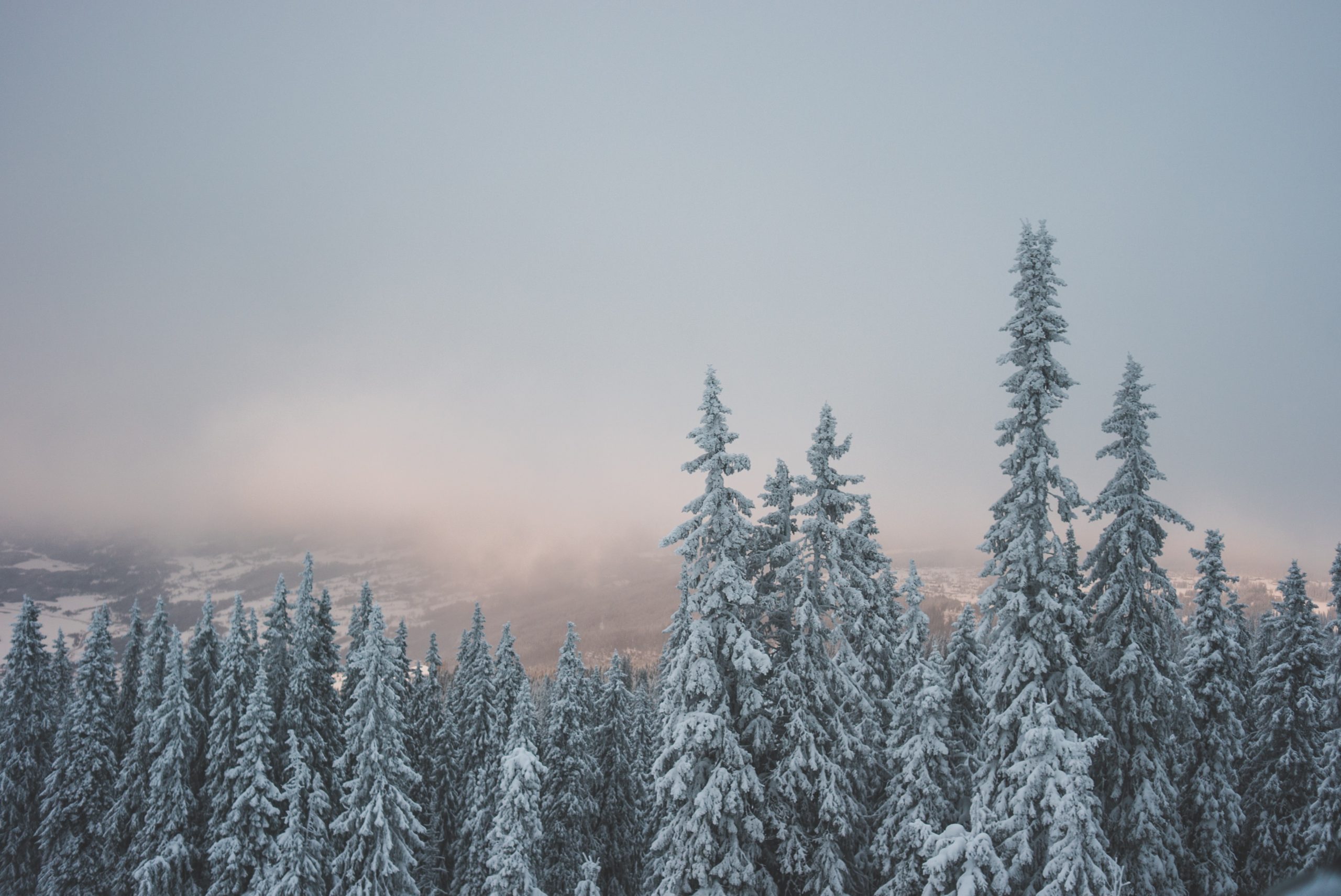
Pine trees (Photo by Erik Odiin on Unsplash)
Pine trees
- Easter white pine is the official tree of Ontario
- Lodgepole pine is the official tree of Alberta
- Description depends on the kind but are on average 15-45m tall
- Bark is thick and scaly
- Branches, needles and cone scales grow spirally
- Have pinecones
Black spruce
- The official tree of Newfoundland and Labrador
- Short, dark, bluish-green needles, with a blunt end, 8-15 mm long and are dense along the twig
- Cones, found at the top of the tree, are egg shaped, 2-3 cm long and dark brown
- Dark orange-brown or yellowish-brown twig with a dark purplish stain at the base\Bark is scaly and reddish or greyish-brown to olive-green or yellowish-green
- Short drooping branches with tips turned up
- Looks like spires
- Found across Canada
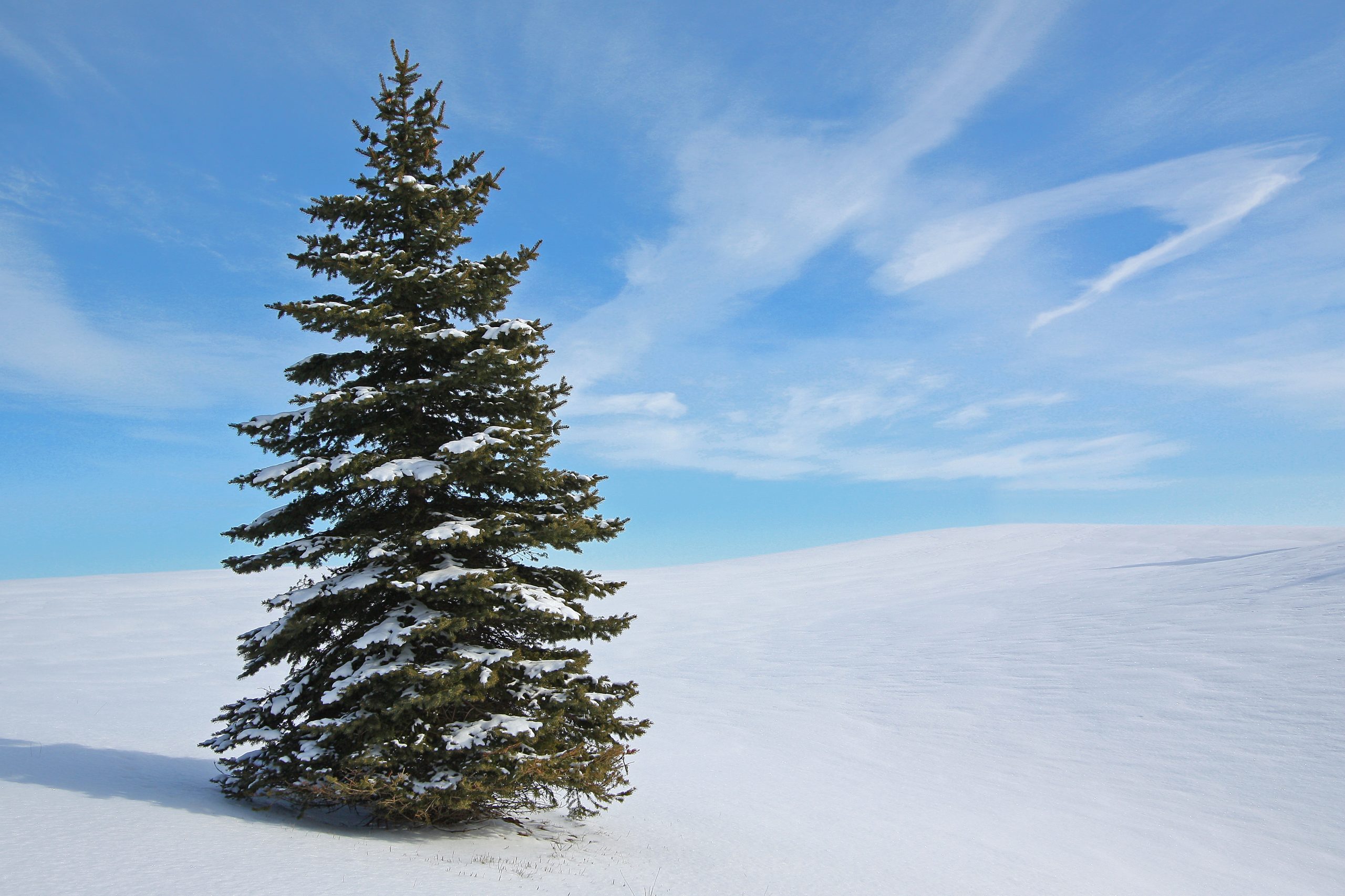
By Allen McGregor from Brampton, Canada – Solitary Fir, CC BY 2.0, https://commons.wikimedia.org/w/index.php?curid=54248703
White spruce
- The official tree of Manitoba
- Around 24 m tall
- Needles are straight, stiff with a pointed tip, blueish green or green with a whitish powdery, waxy layer and 2 cm long
- Twigs are hairless and shiny, light greenish-grey tinged with orange or purple with rounded leaf cushions
- Cones are 5-7 cm long and light brown
- Bark is light grey to darker grey and becomes scaly with age
- Shaped like a cone, ragged, irregular and looks like spires
- Branches are horizontal with the lower branches sloping downwards and tips are slightly turned up
- Often used as Christmas trees
- Found across Canada and along the arctic tree line
- Deer, rabbits, porcupines, birds, and small rodents eat their bark, branches, buds and seeds
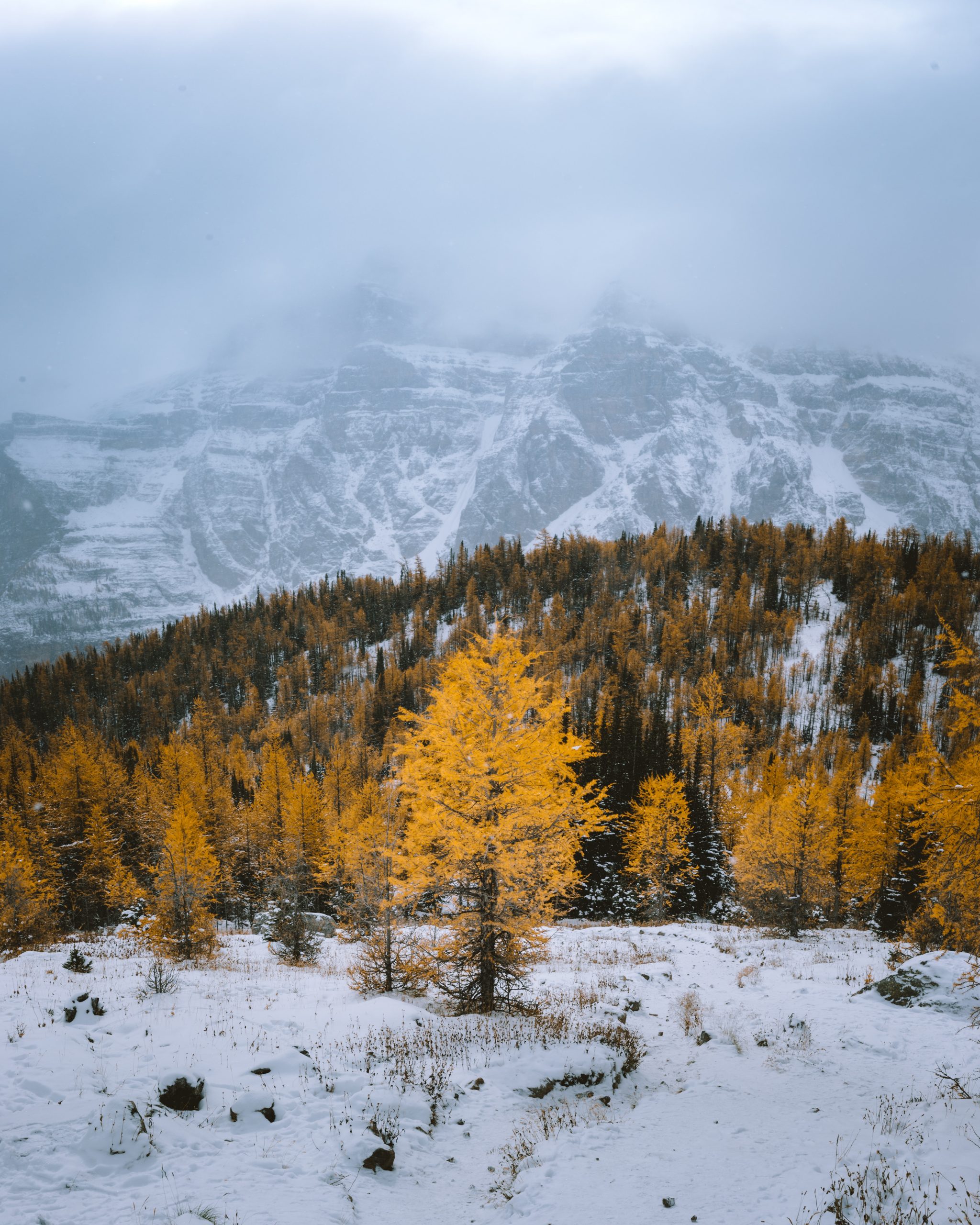
Photo by Nathan Peterson on Unsplash
Tamarack
- The official tree of the Northwest Territories
- Read more about the tamarack in one of our older posts
- Deciduous conifer
- Triangular leaves 2-5 cm long
- Twigs are orange-brown to pinkish and hairless
- Bark becomes scaly with age and is grey to reddish-brown
- Trunk is slender and straight
- Narrow cone-shaped
- Branches are horizontal and sometimes sloping upwards
- Found across Canada
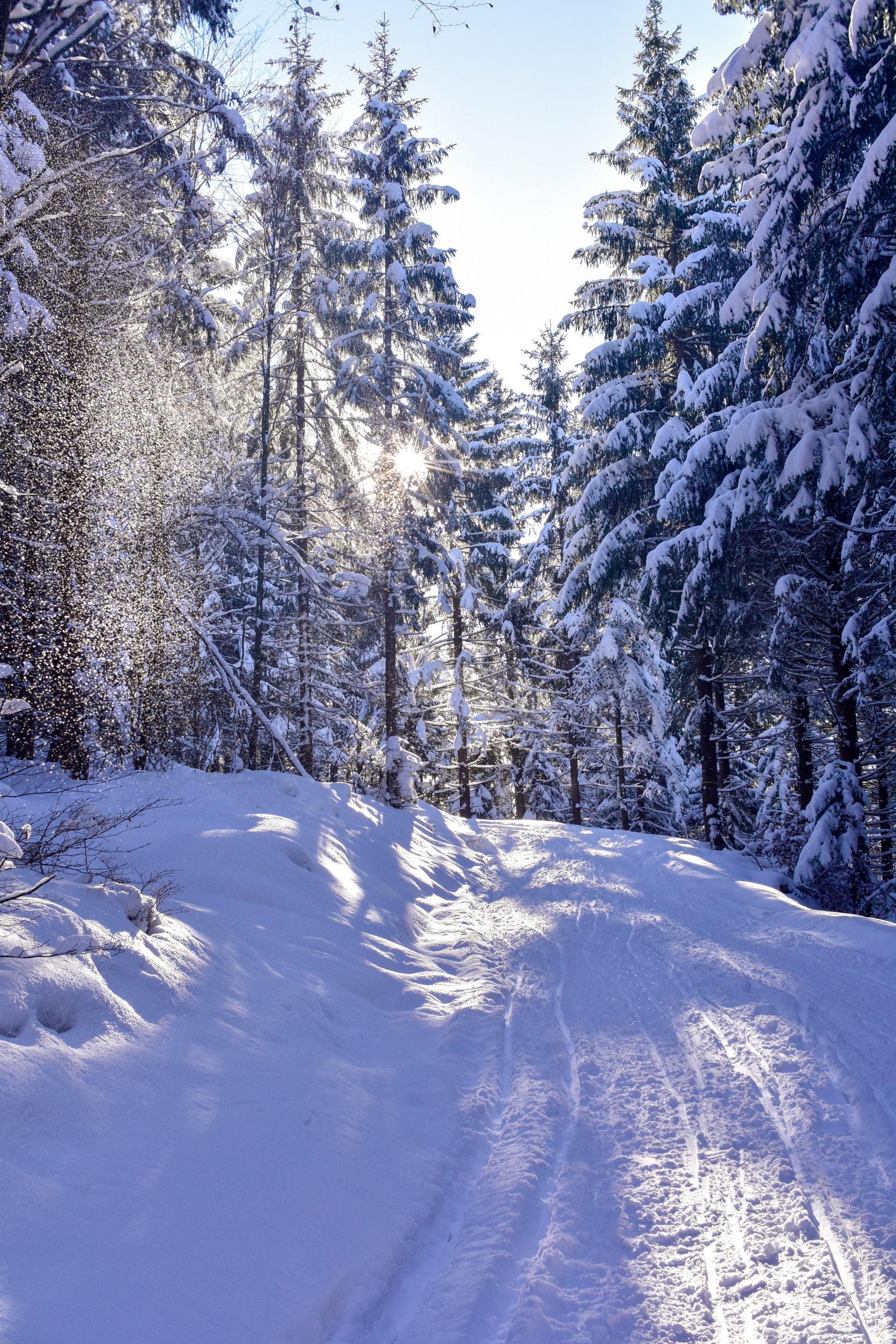
Photo by Sandra Grünewald on Unsplash
Balsam fir
- The official tree of New Brunswick
- Needles are flat, blunt and shiny dark green with white dots, and 2-4 cm long
- Tall, narrow and tapers to a skinny point at the top, like a spire
- Cones are barrel shaped, greyish brown and 4-10 cm long
- Bark is smooth and breaks into irregular scales with age, and goes from grey to brown
- Foliage extends to the ground and tapers at the top
- Often used as Christmas trees
- Found in the Northern forests of central and eastern Canada
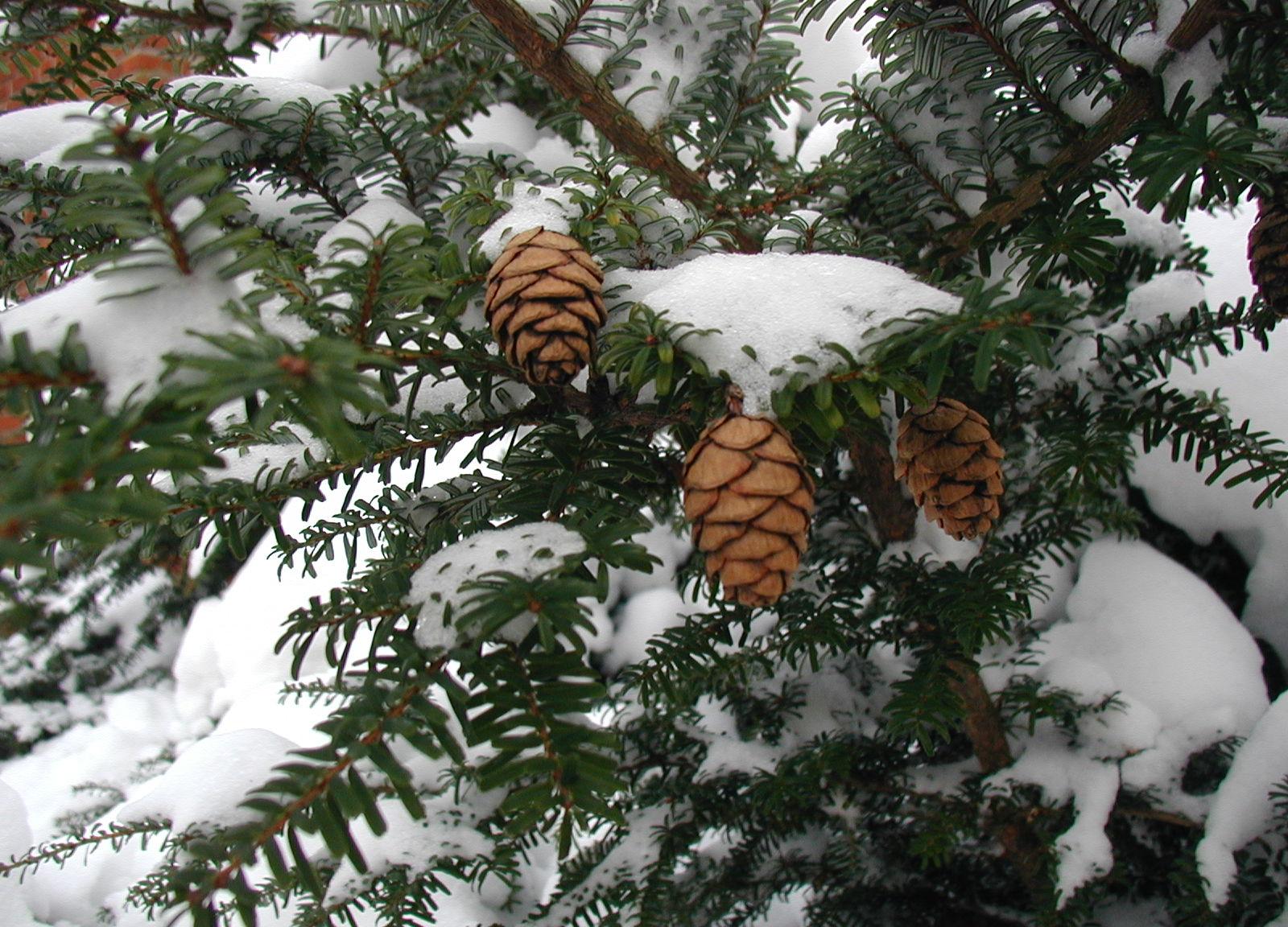
CC BY-SA 3.0, https://commons.wikimedia.org/w/index.php?curid=298754
Hemlock
- Description depends on the kind
- Three kinds are native to Canada: eastern hemlock, western hemlock and mountain hemlock
- Tall and slender, usually drooping
- Needles are blunt
- Cones are small and 2 cm long

W.carter, CC BY-SA 4.0, via Wikimedia Commons
Cedar
- Western redcedar is the official tree of British Columbia
- Depends on type: Western redcedar found along the BC coast and the western slopes of the Rocky Mountains, Eastern whitecedar is found in the Great Lakes-St Lawrence forest region
- Small, scalelike leaves that cover flat, spray-like branches
- Oval cones are 1-2 cm long
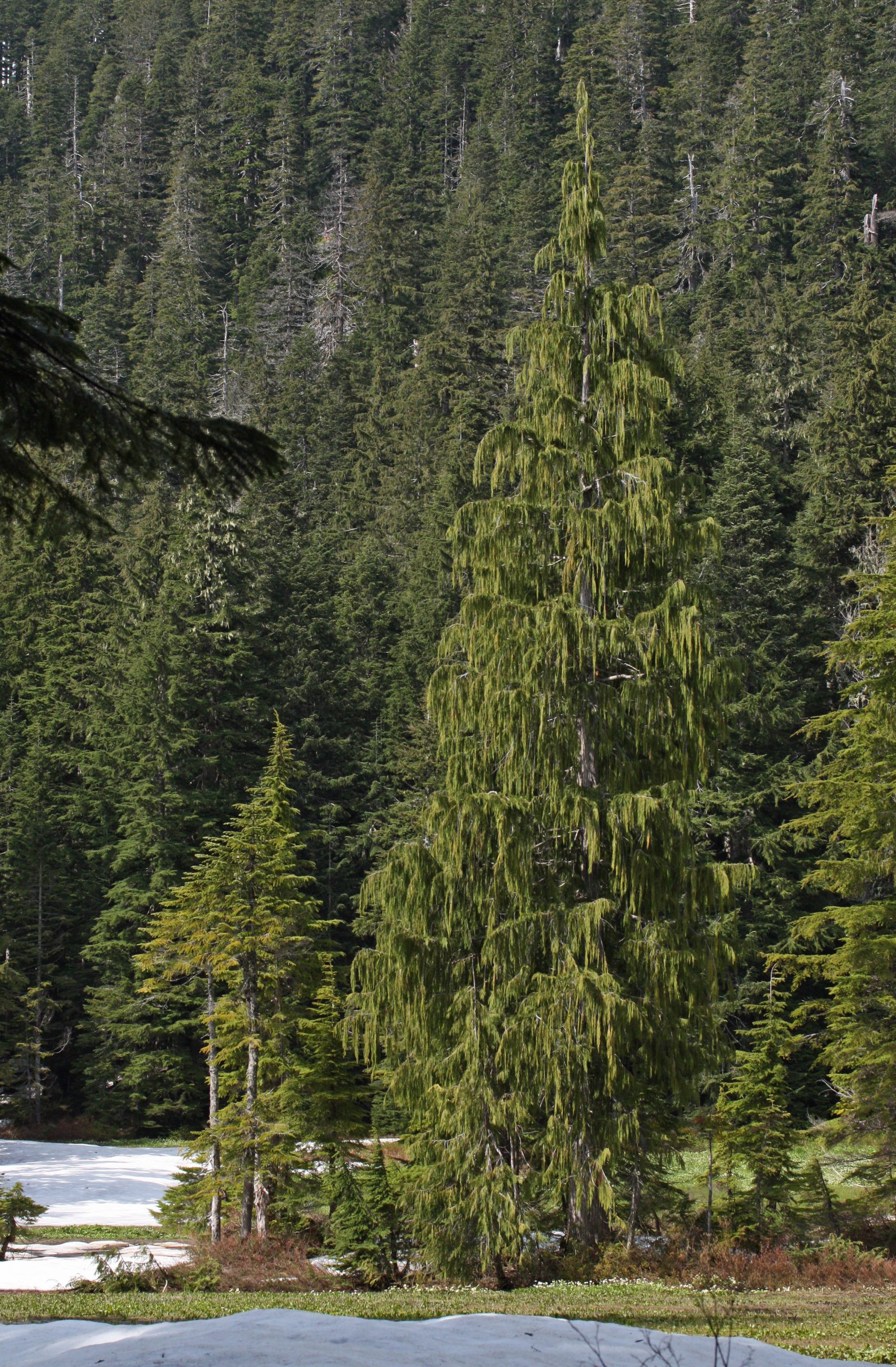
Cypress (By Walter Siegmund (talk) – Own work, CC BY-SA 3.0, https://commons.wikimedia.org/w/index.php?curid=7631070)
Cypress
- Yellow cypress is found along BC
- Medium-sized tree
- Leaves are small and scalelike
- Cones are round, 1 cm wide
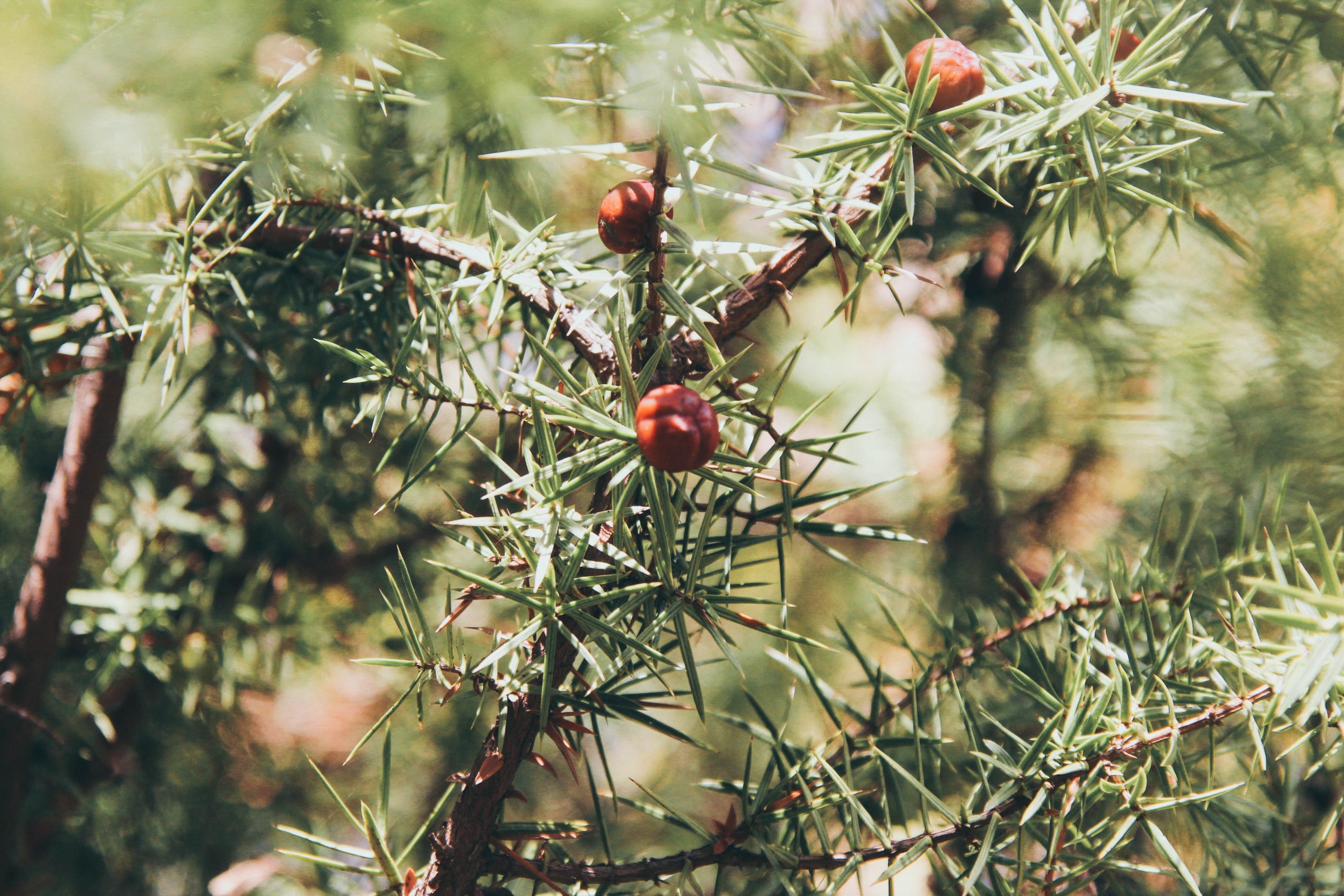
Juniper branch and seeds (Photo by Ashley Bowen on Flickr)
Juniper
- Four kinds are native to Canada: eastern red cedar (Great Lakes), Rocky Mountain juniper (BC), common juniper and creeping junipers are shrubs in the Boreal forest and prairies
- Scale-like leaves
- Round, berrylike seed cones
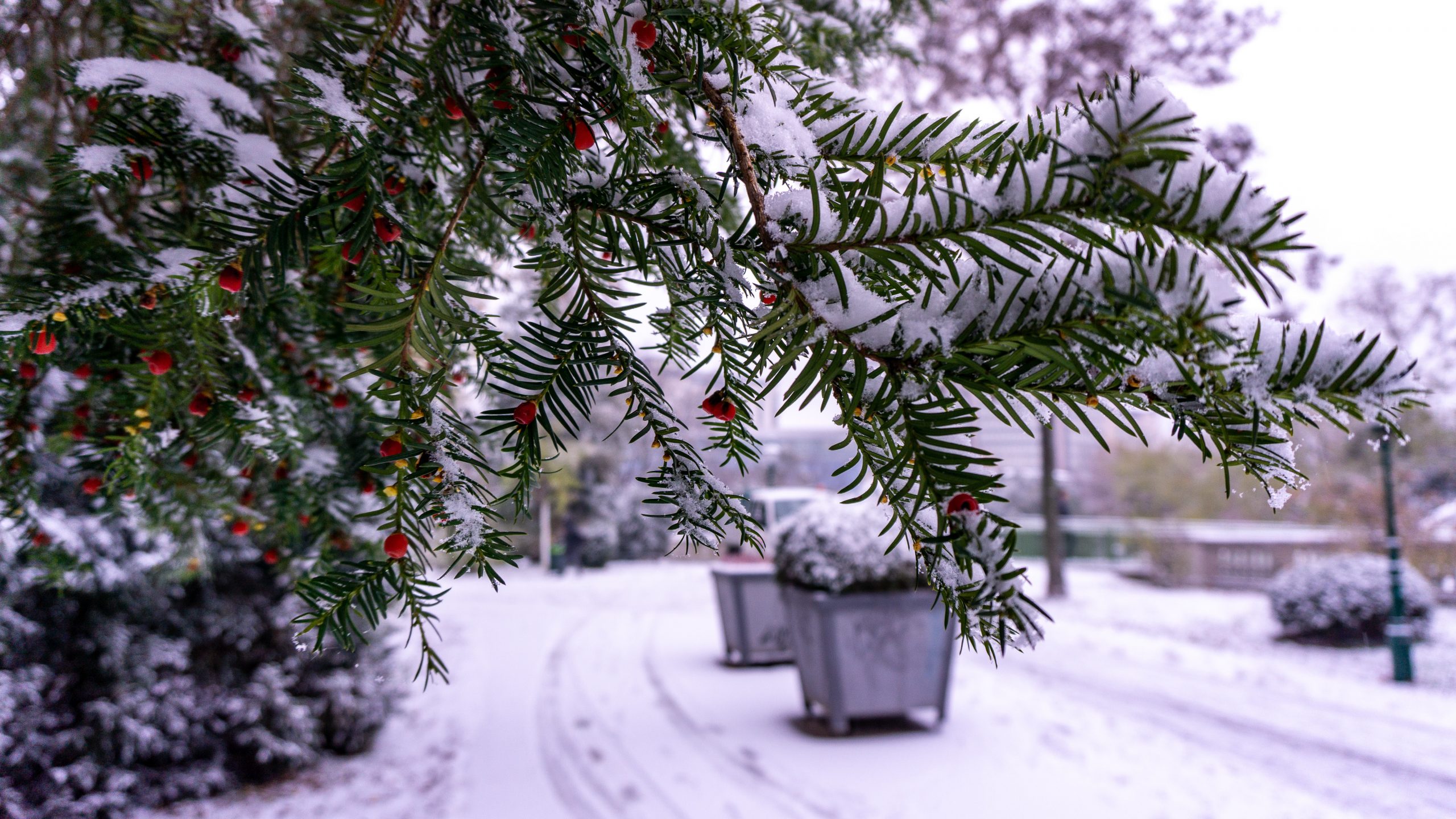
Yew branch (Photo by Archana Reddy on Unsplash)
Canadian Yew and Western yew
- 2-m high shrub
- Branches are spread out and slope upwards
- Bark is reddish and thin
- Leaves are 1-2.5 cm long, pale green
- Seeds aren’t in cones but in red, fleshy berrylike structures called arils
- Canadian yew are found in Manitoba eastward
- Western yew are found in southern and western British Columbia
Resources
Identify more coniferous trees with this resource: National Resource Canada: Identify a conifer tree
Trees in Winter – Ontario Parks




